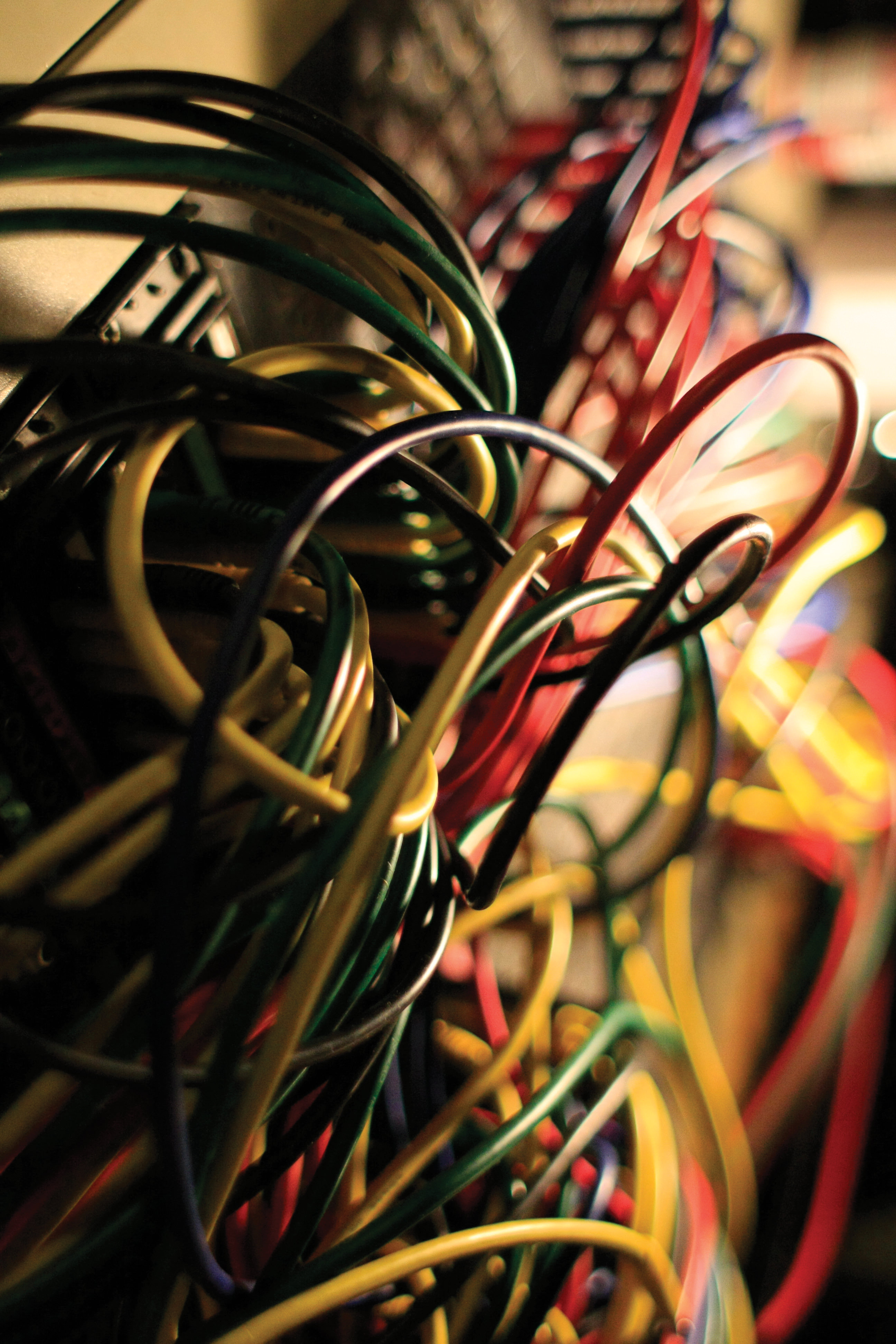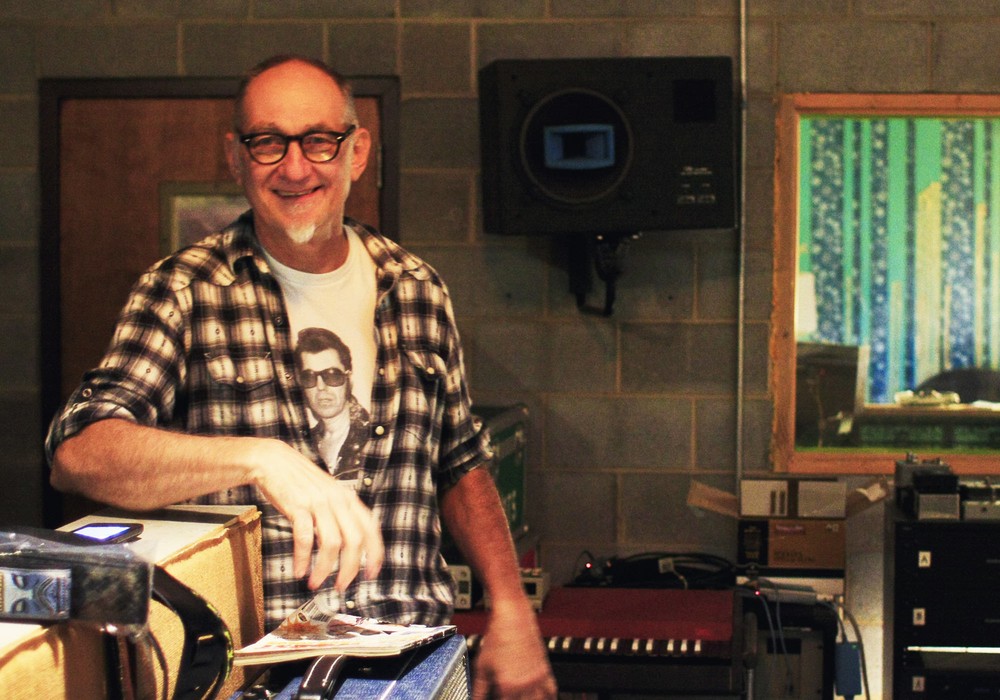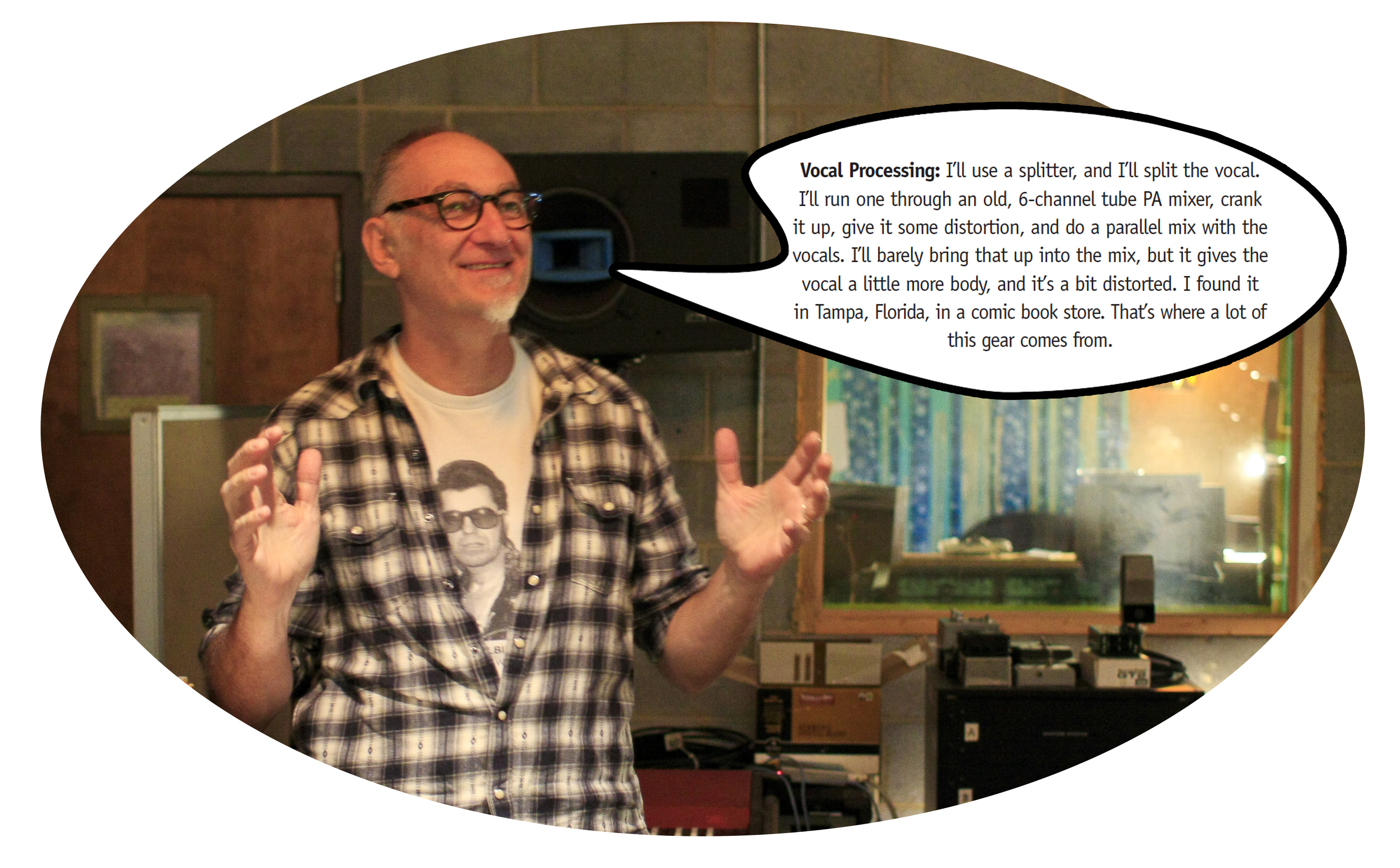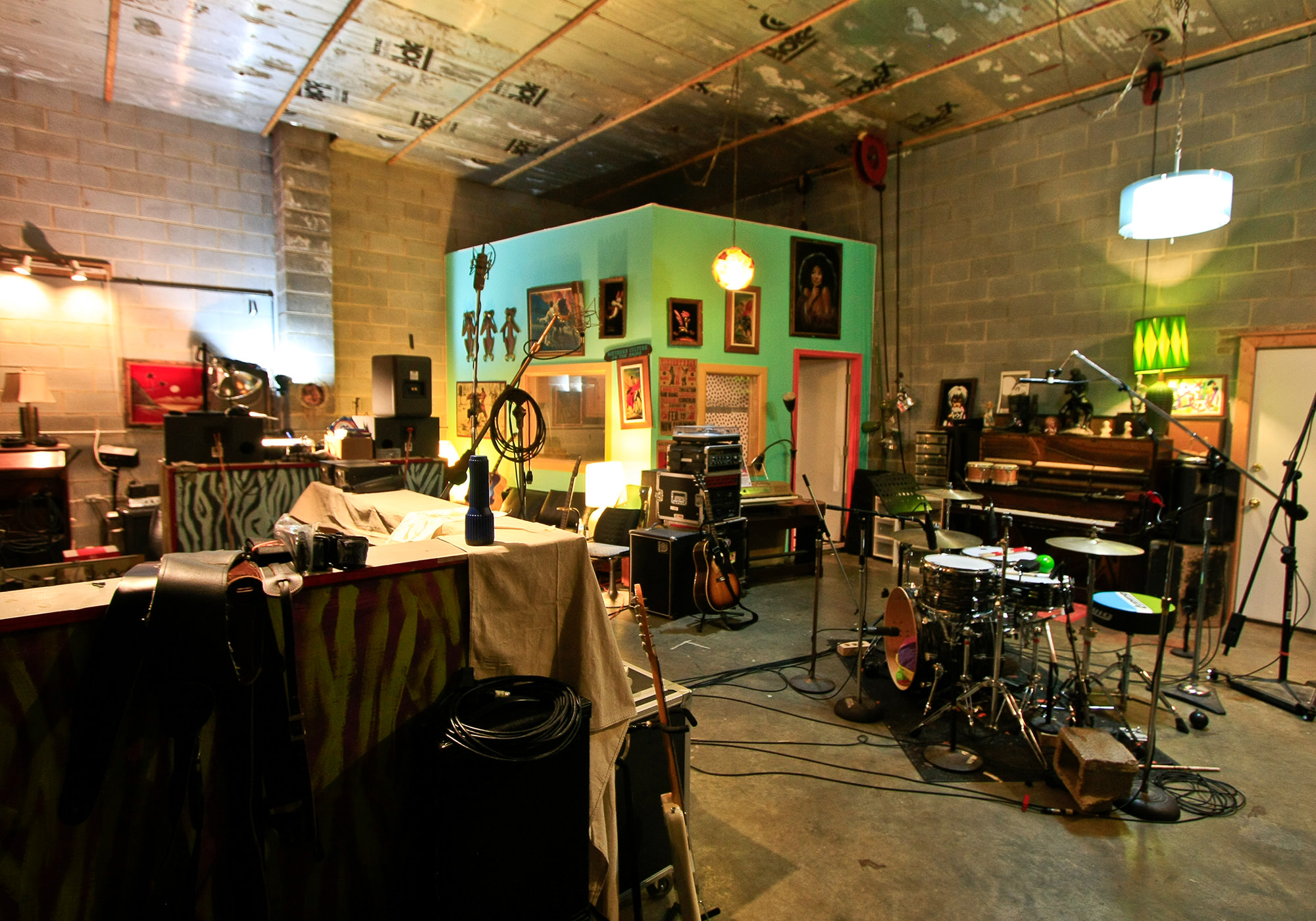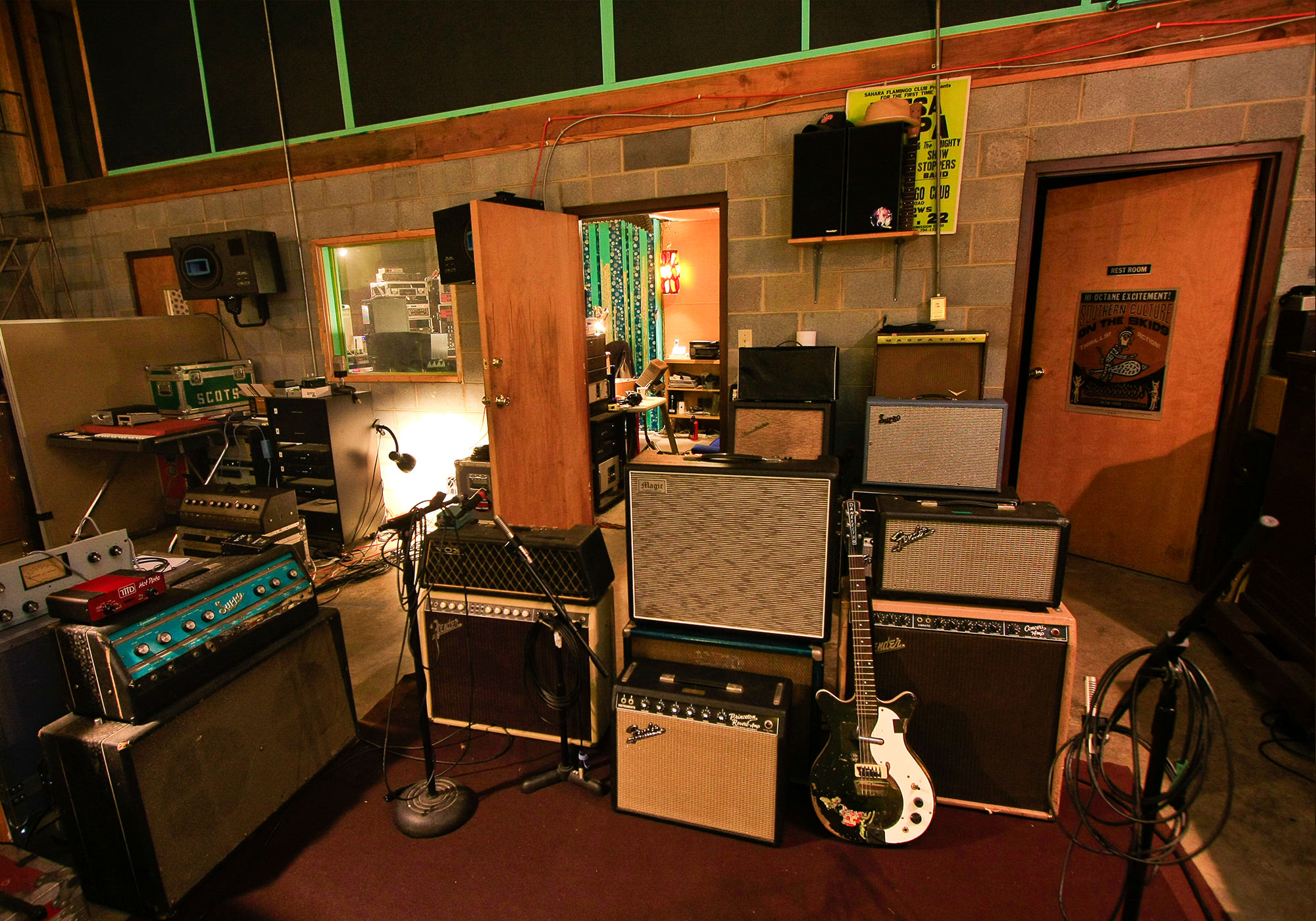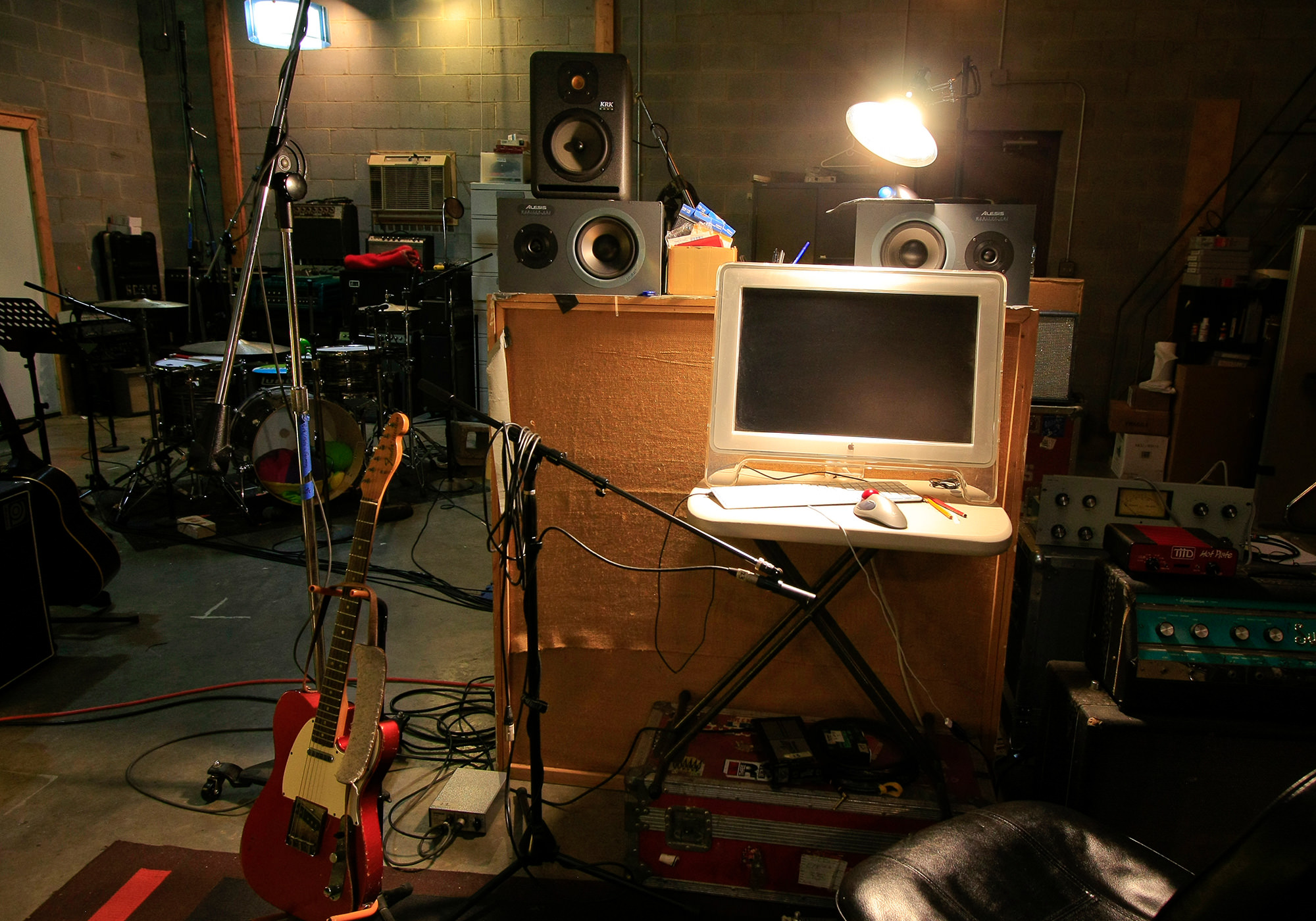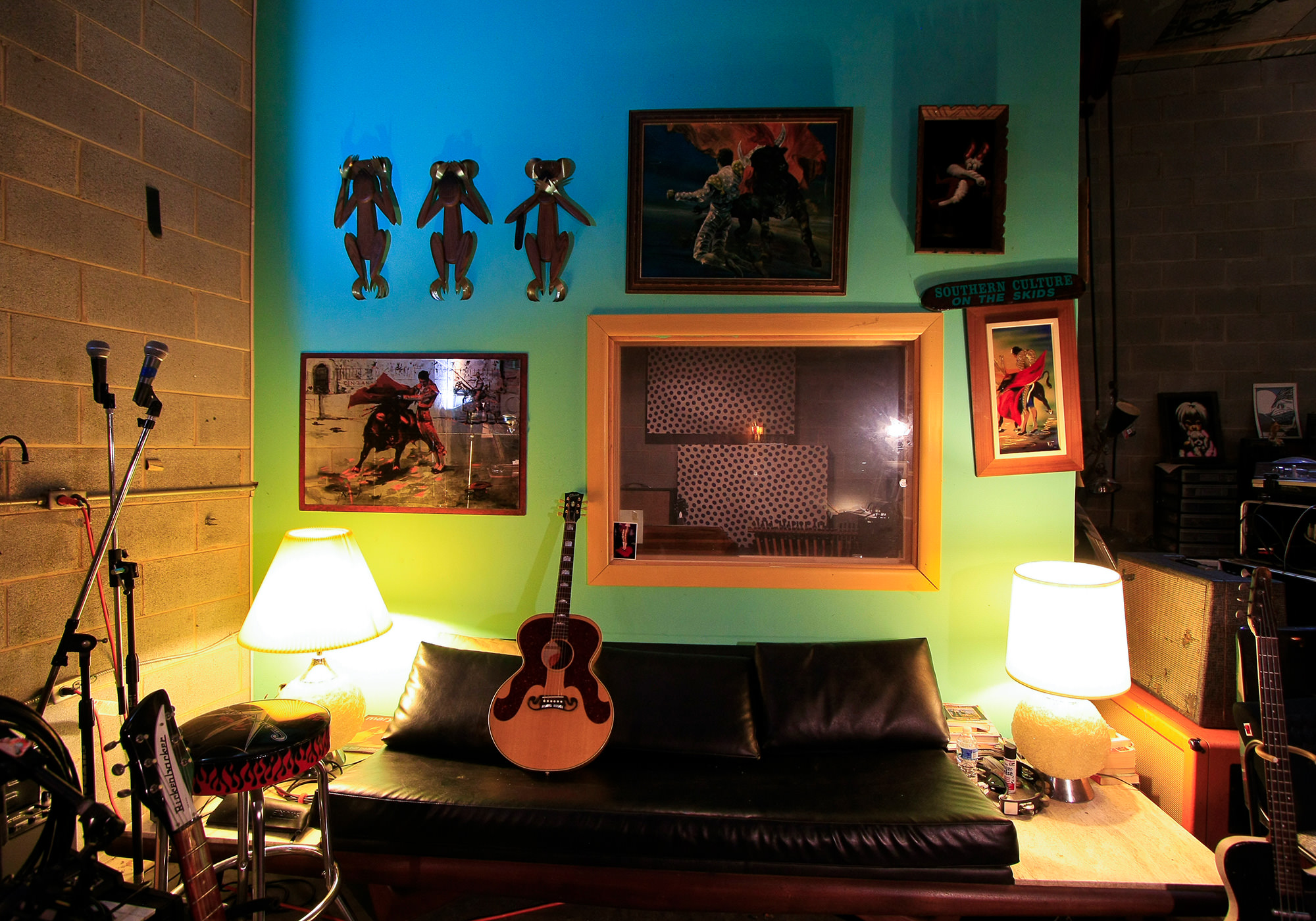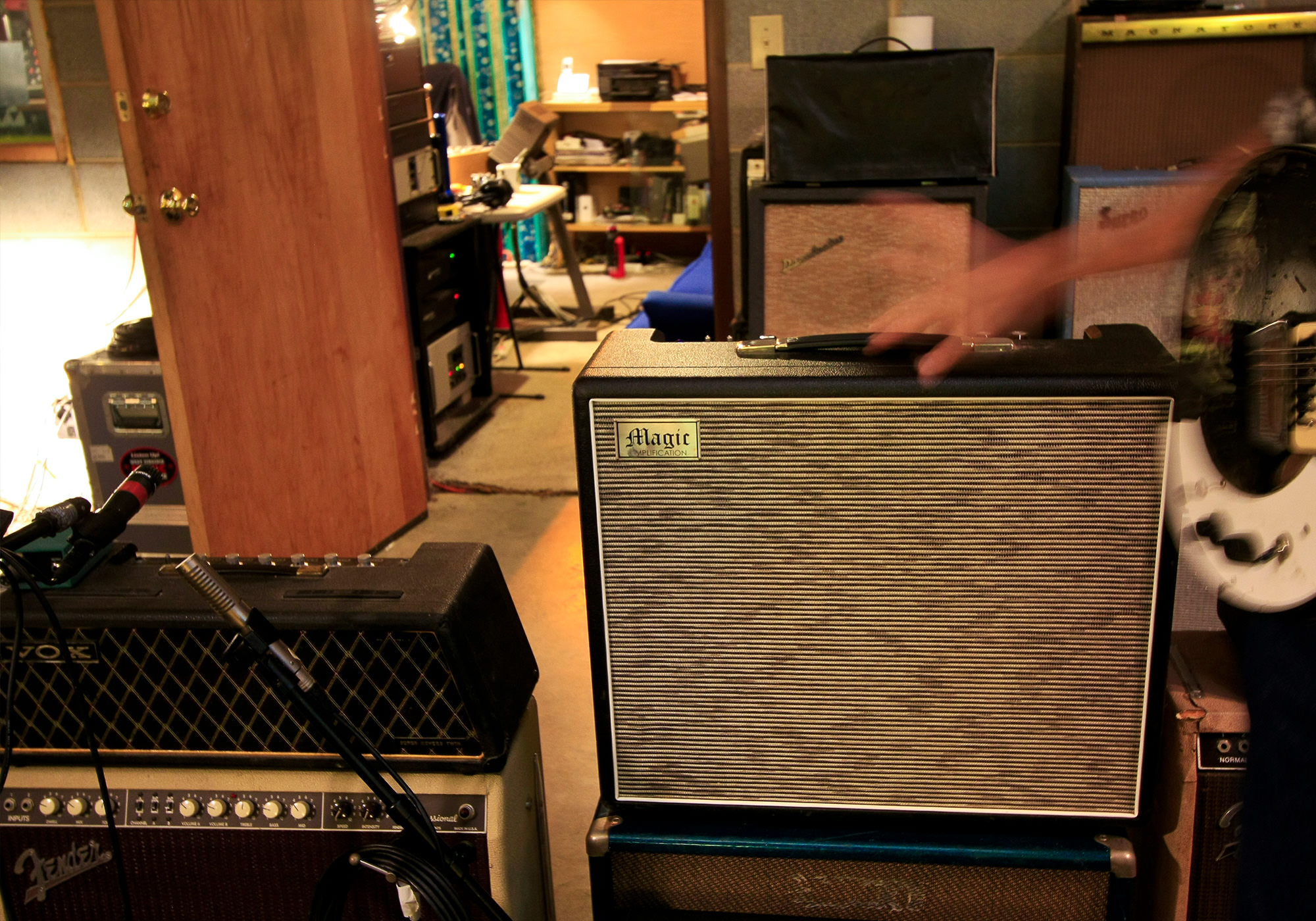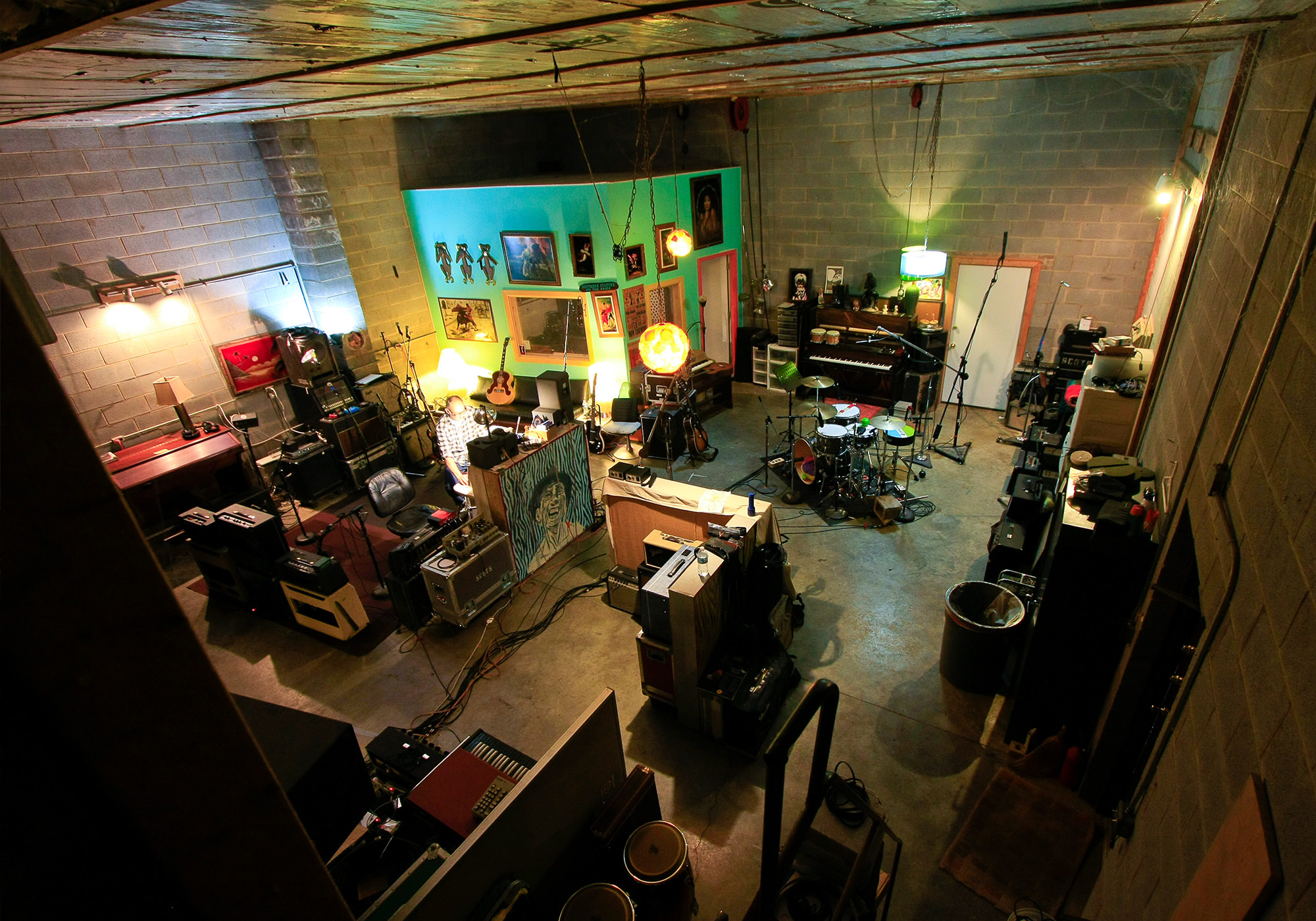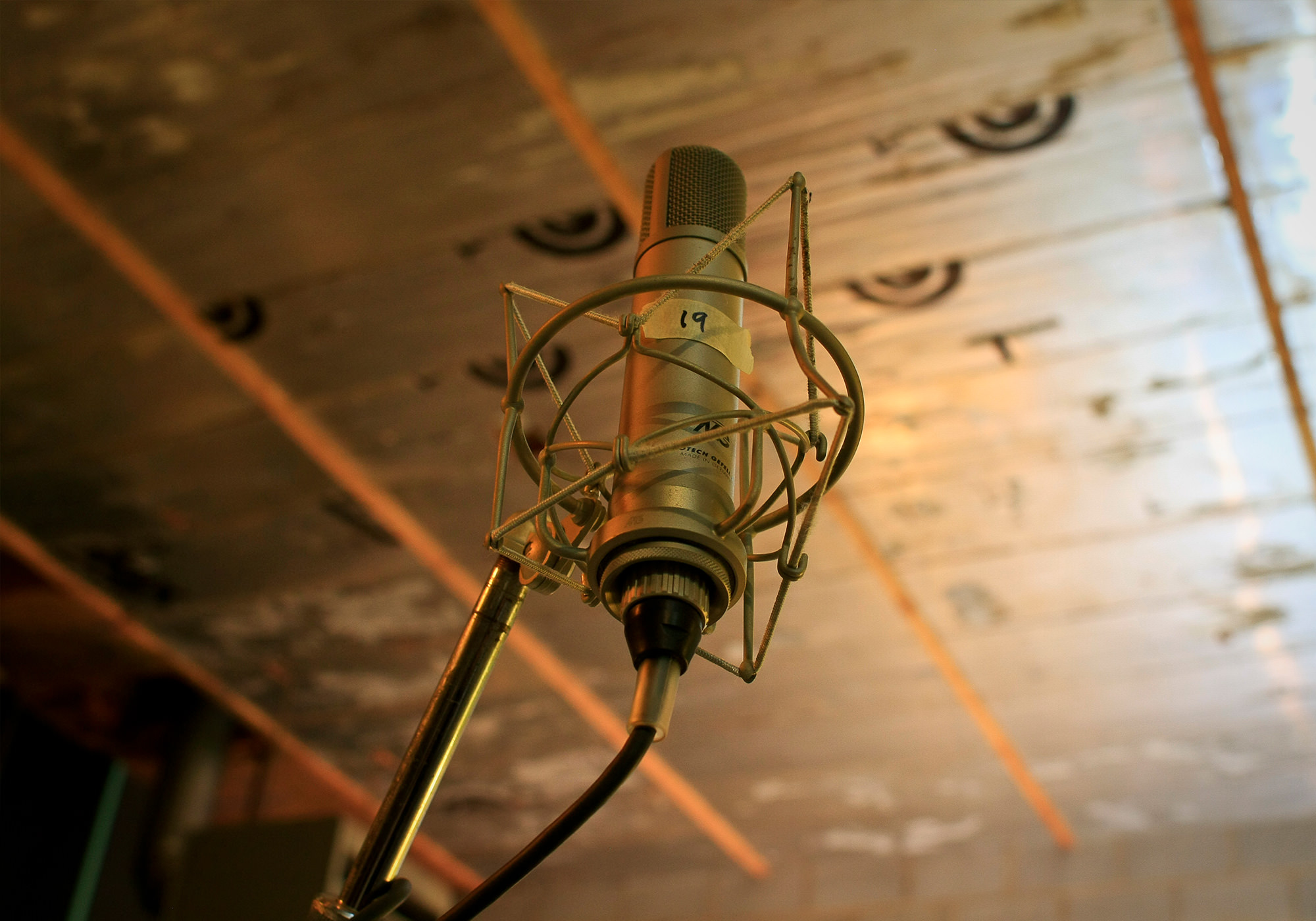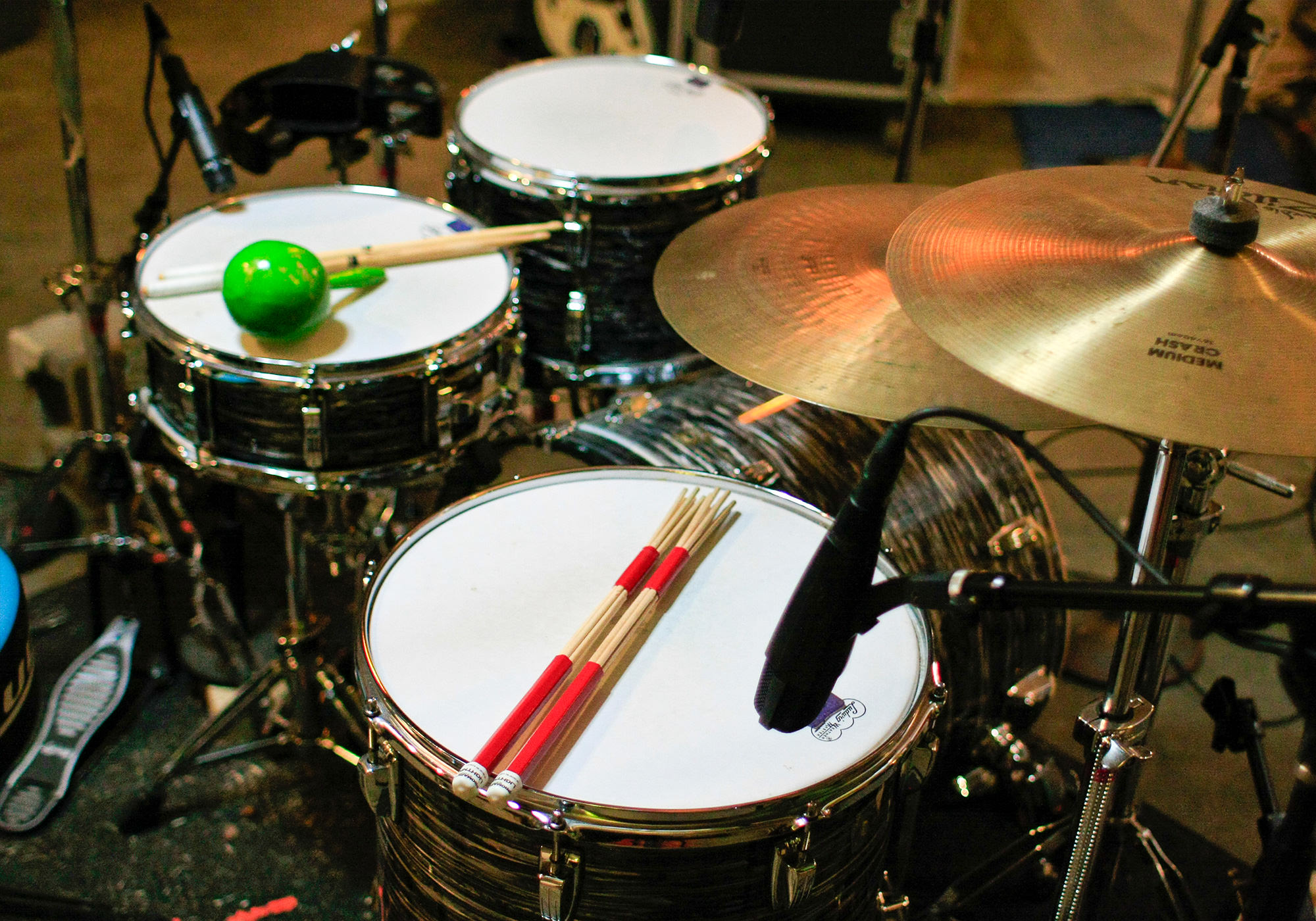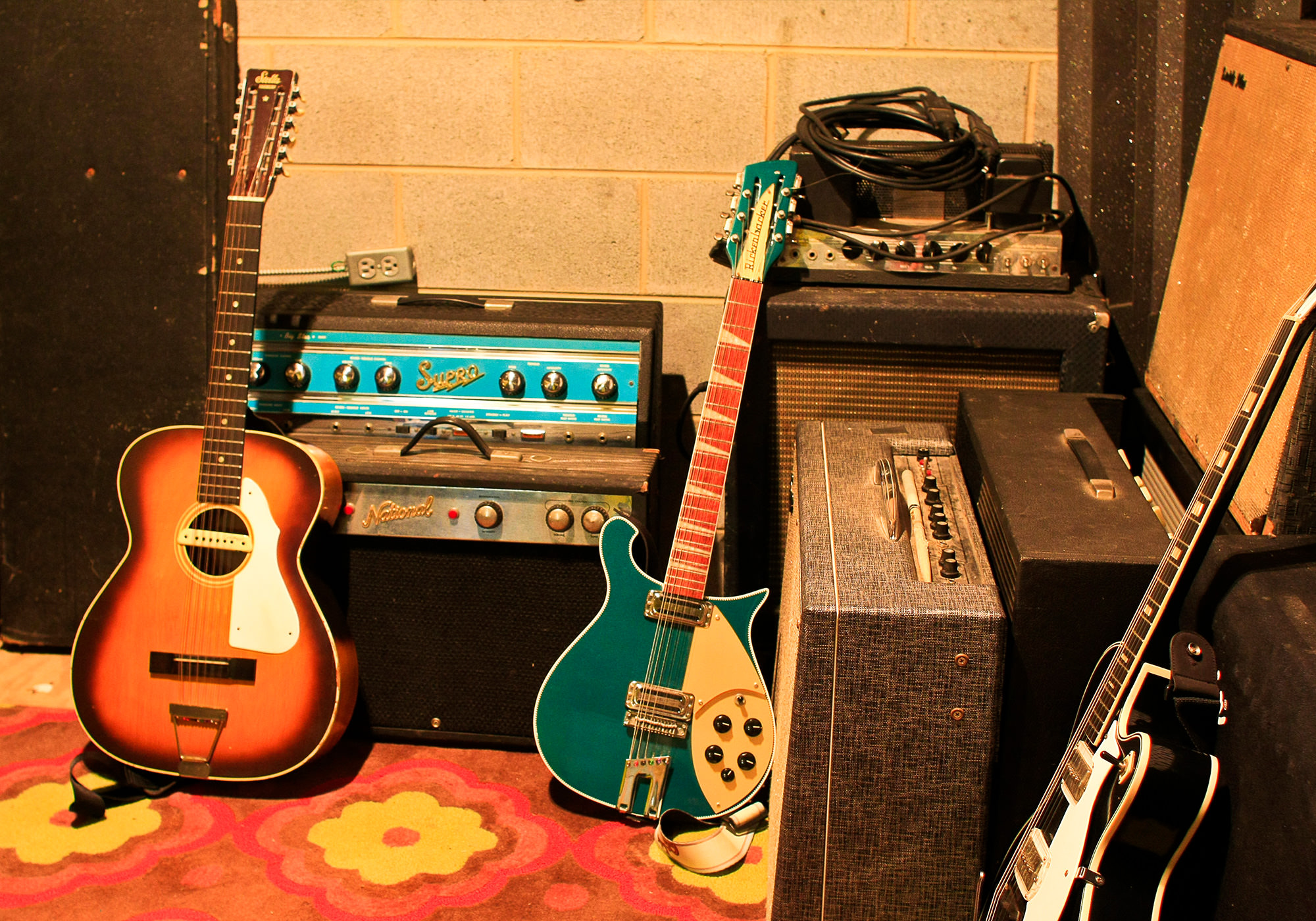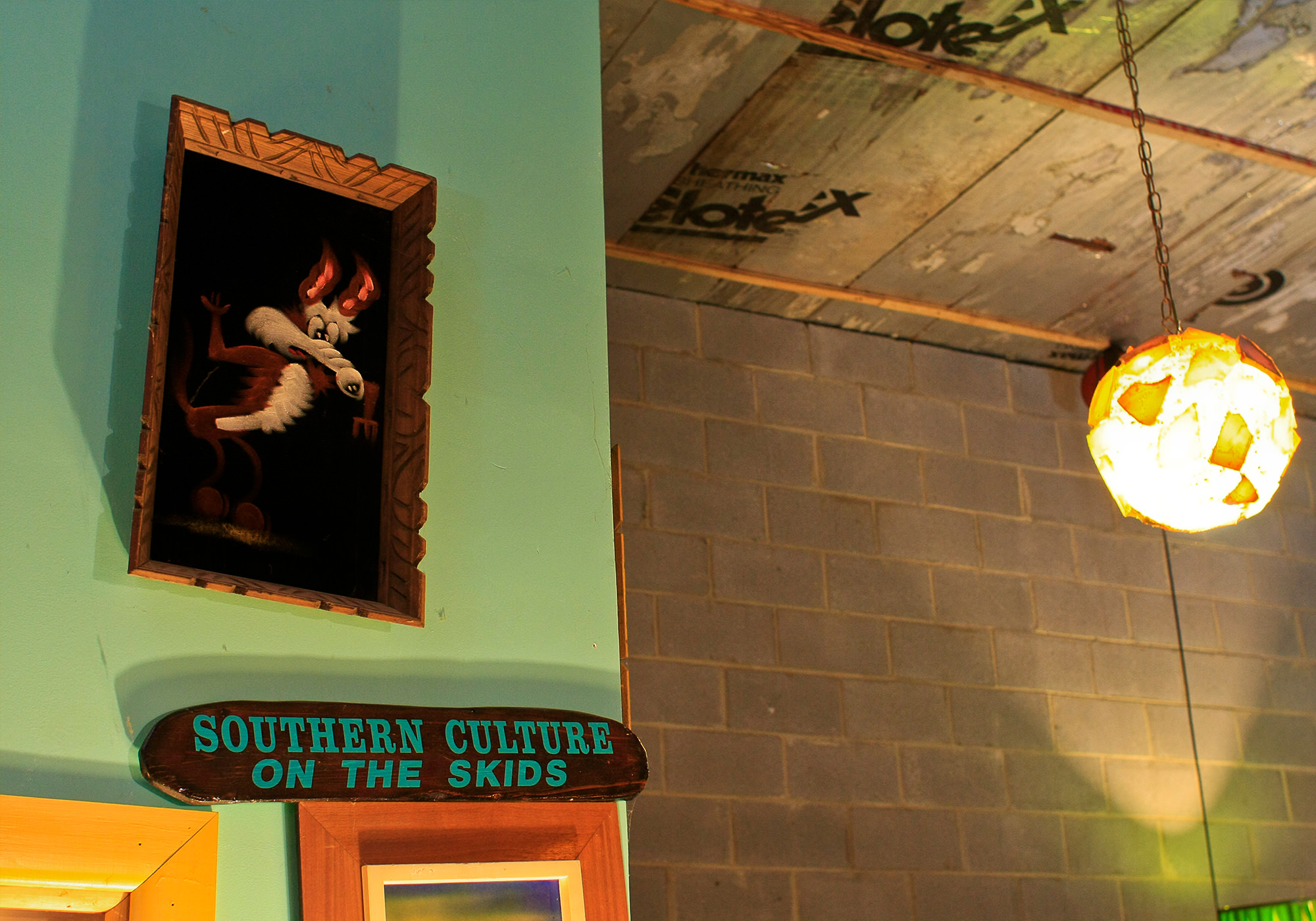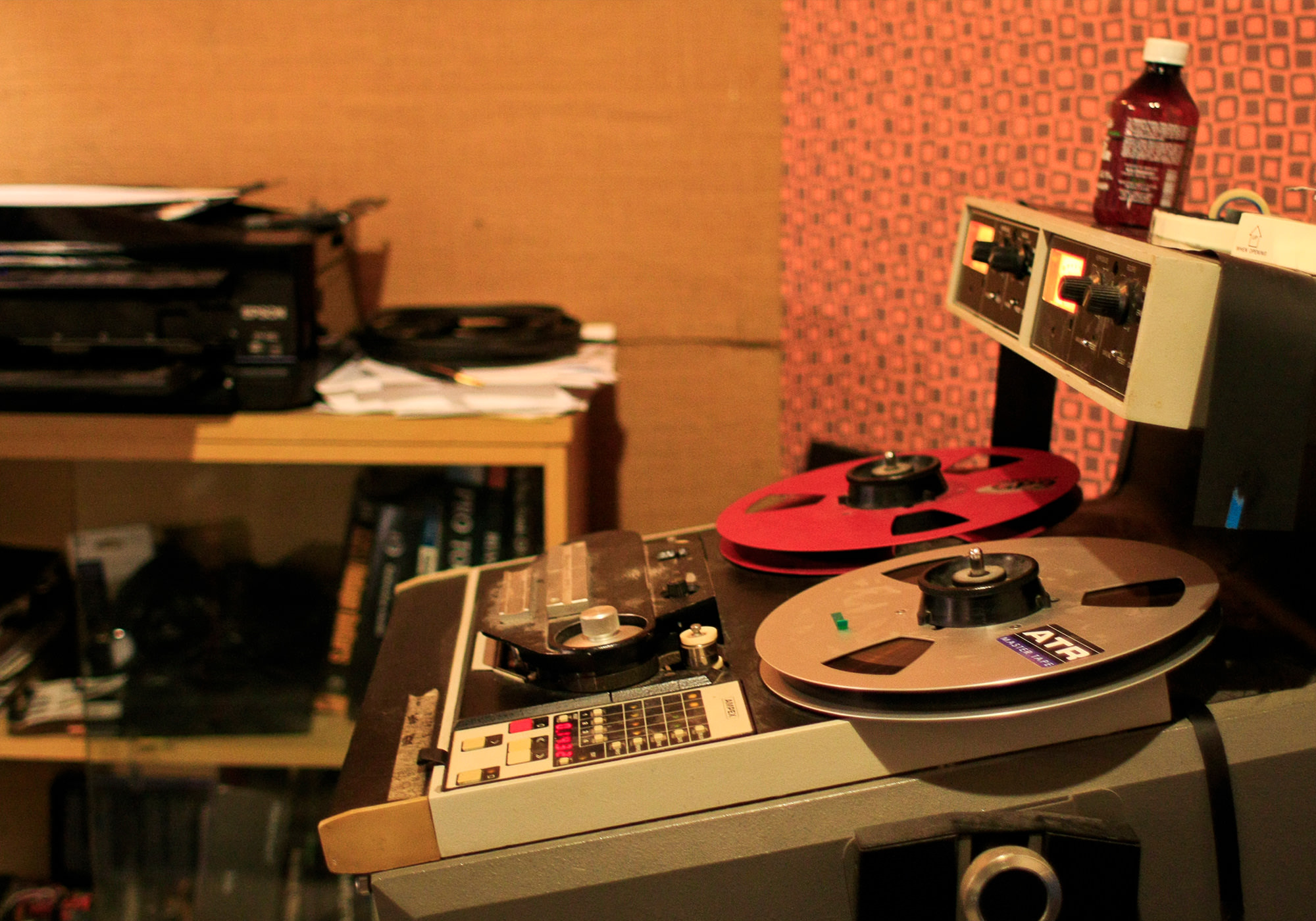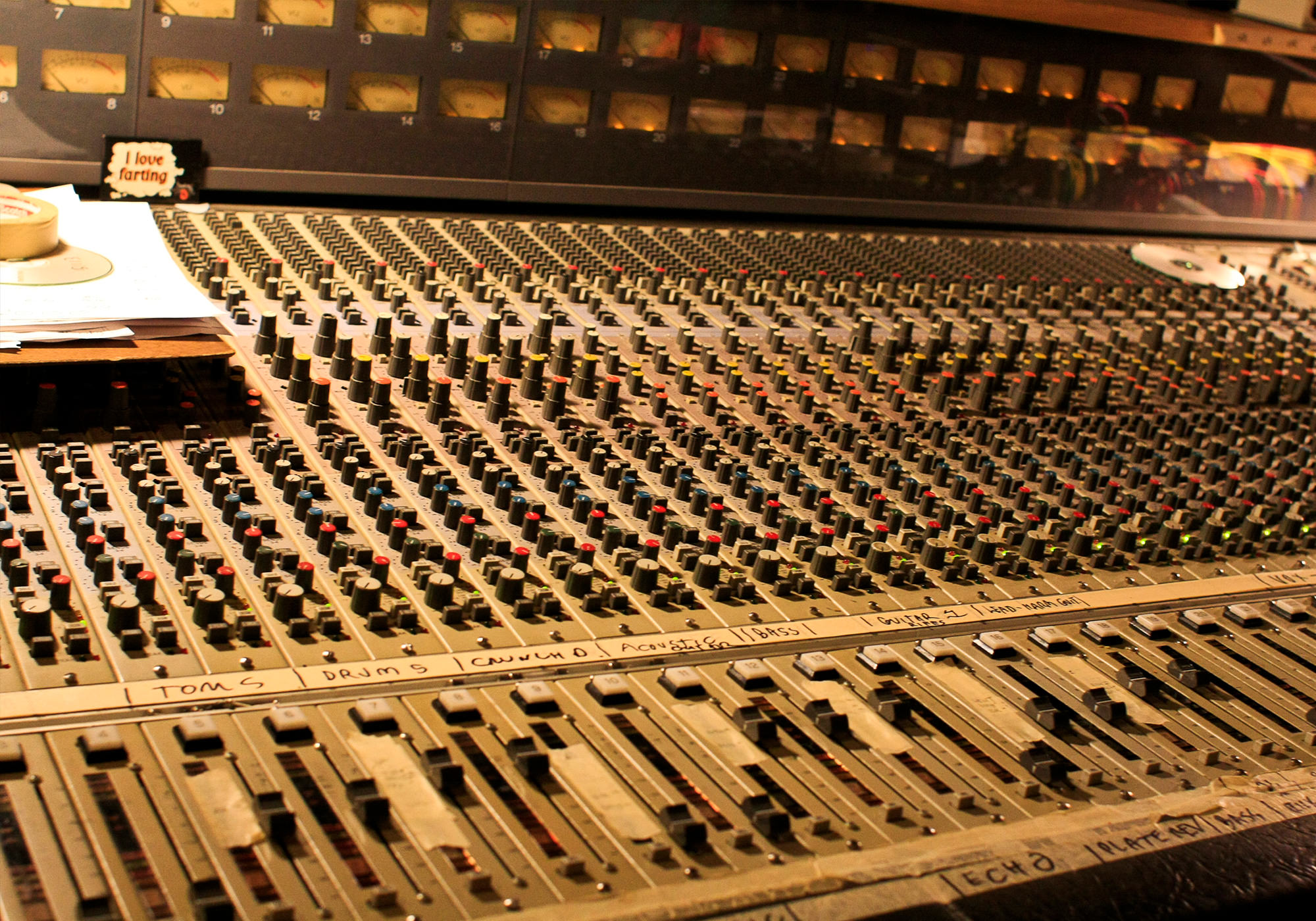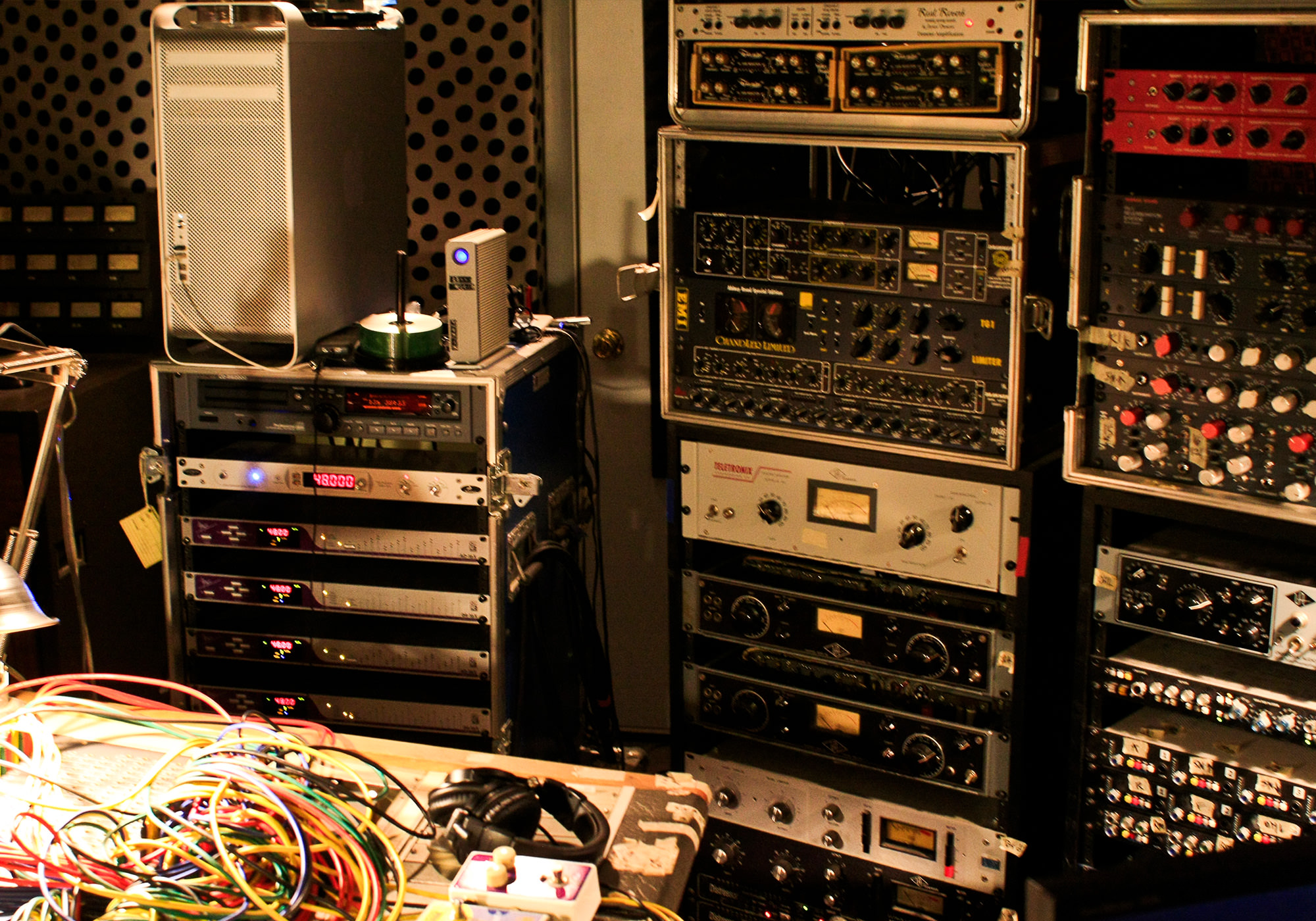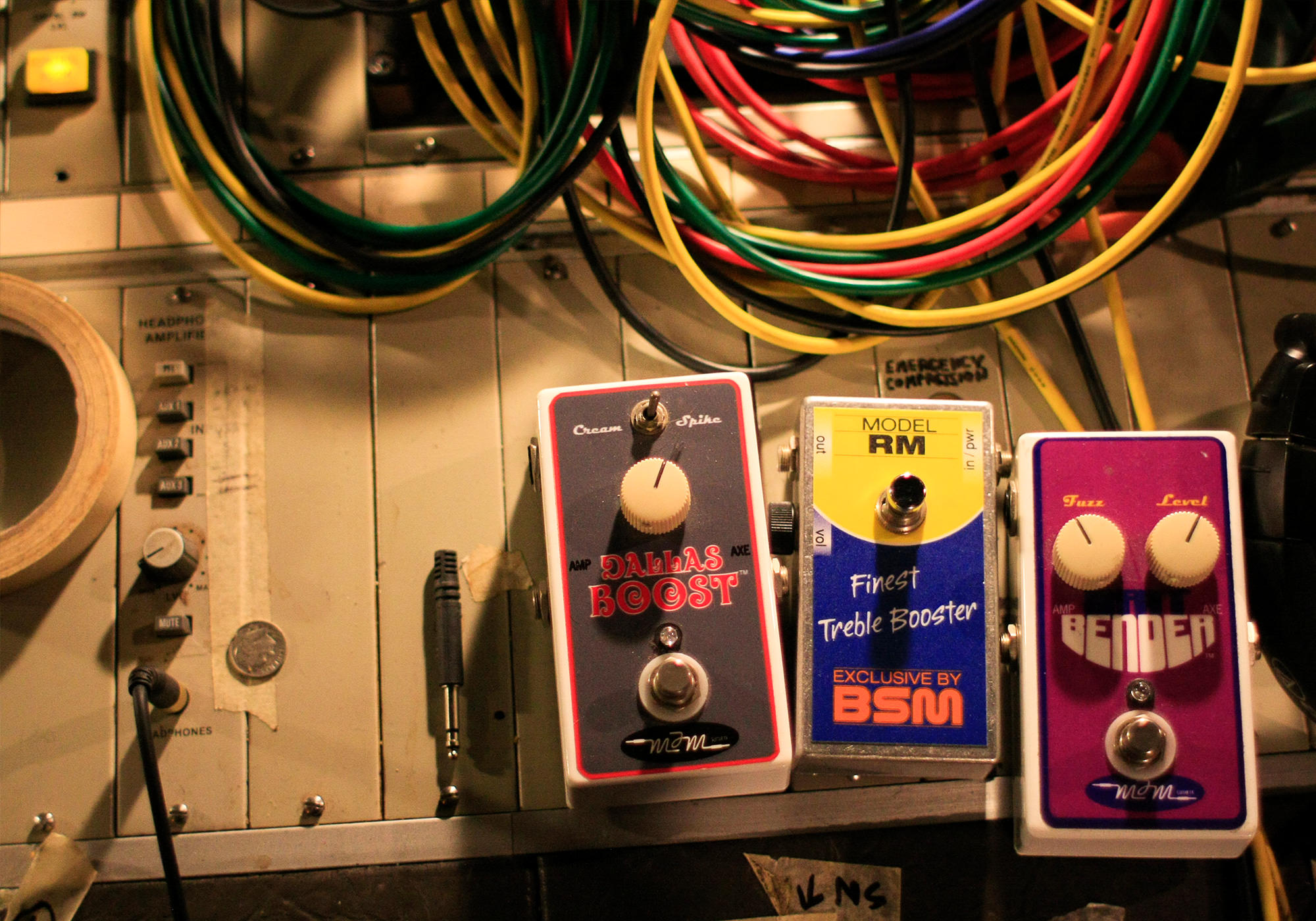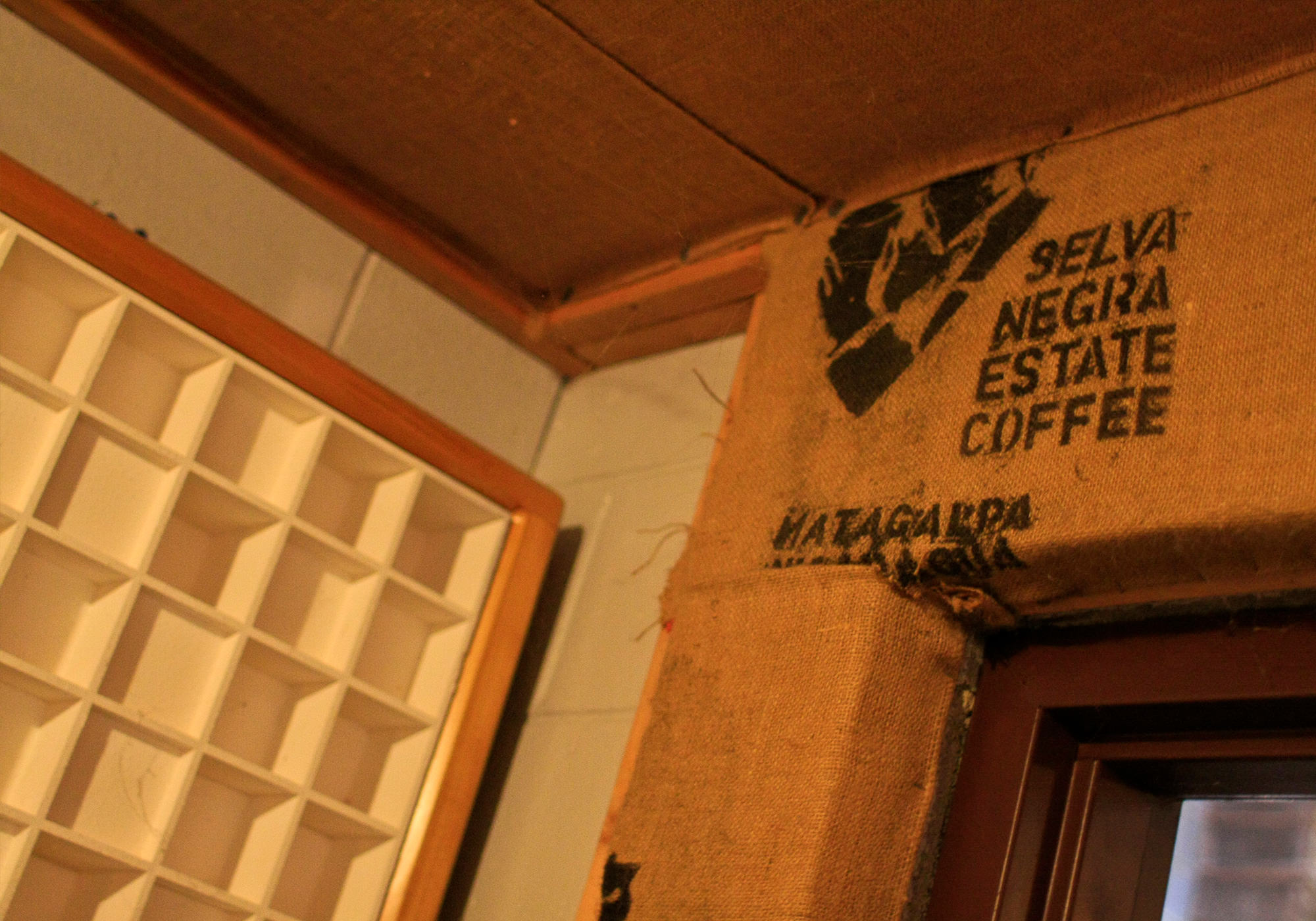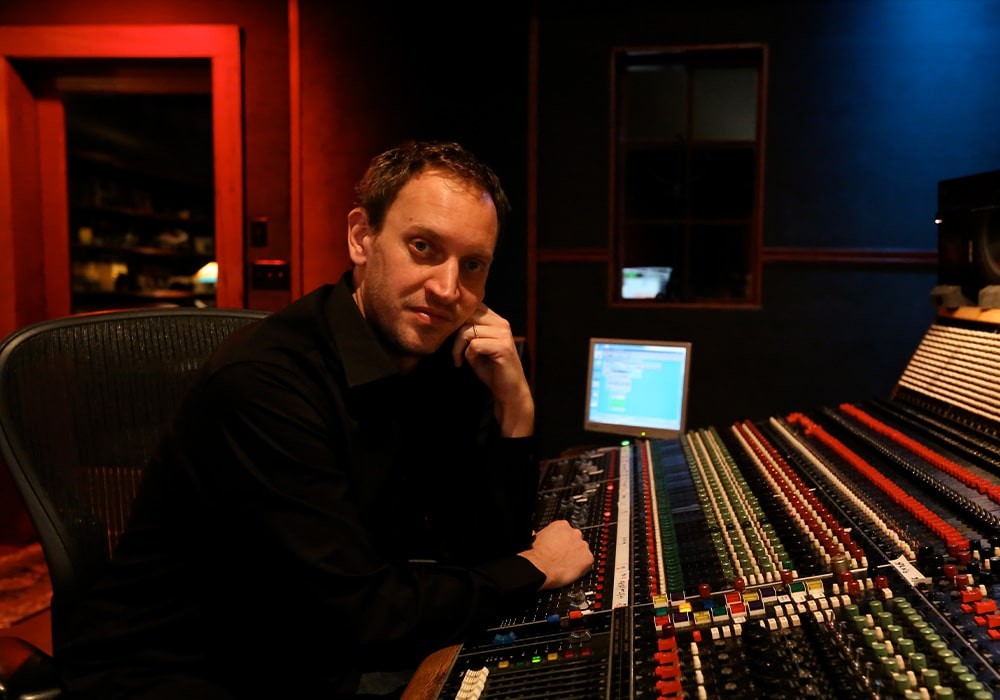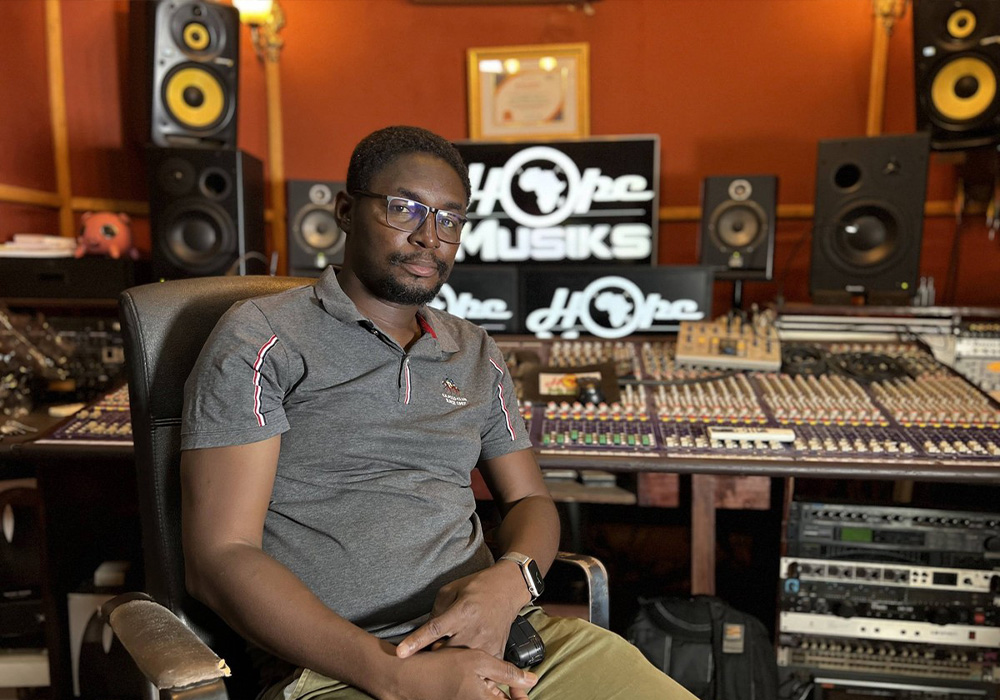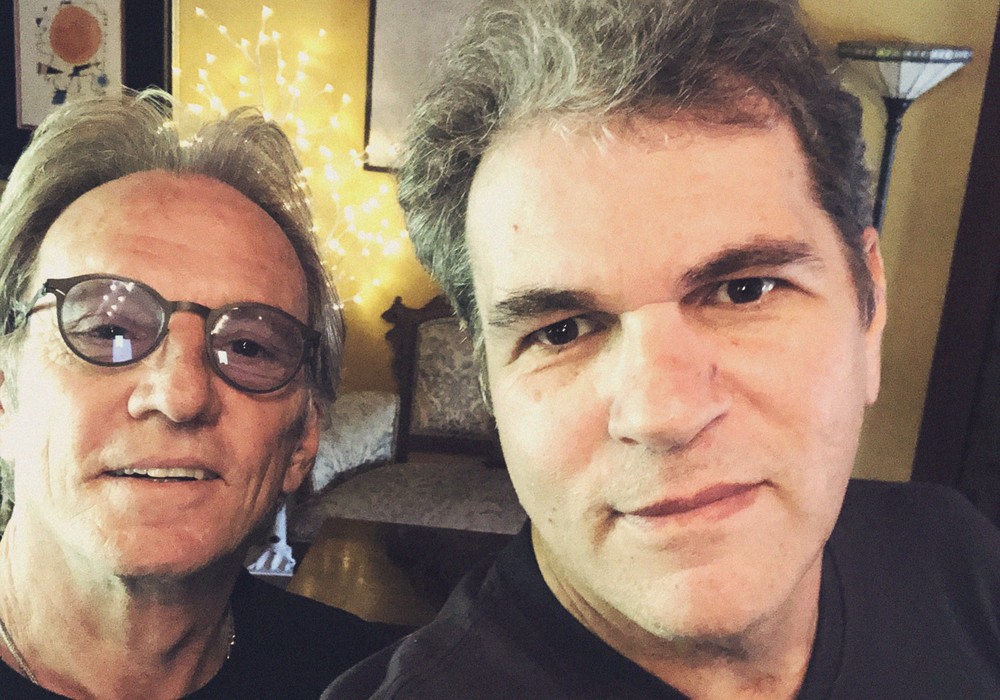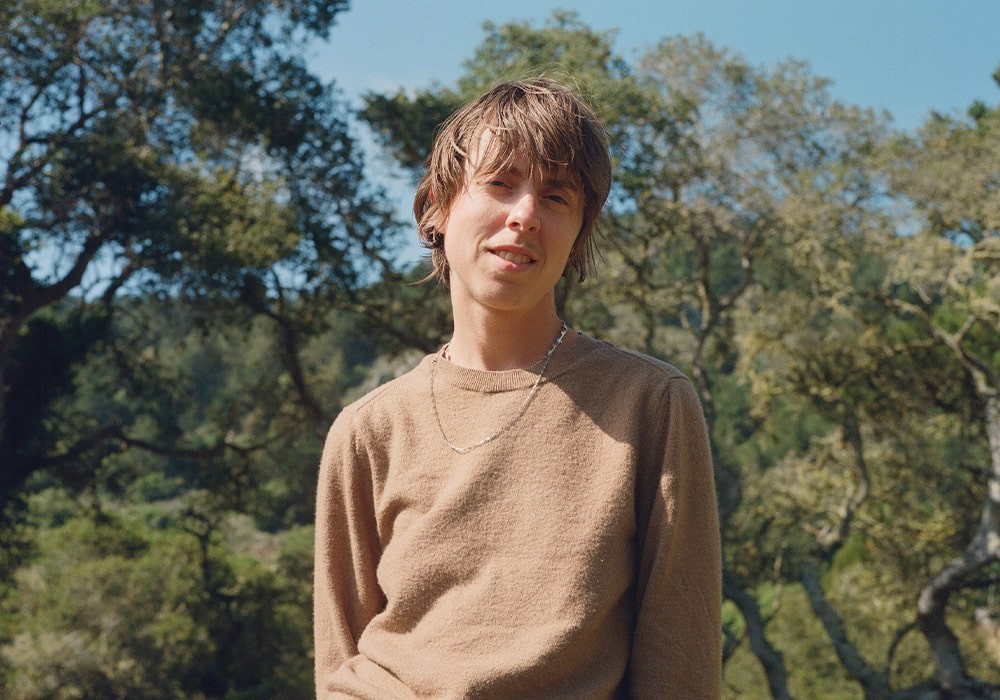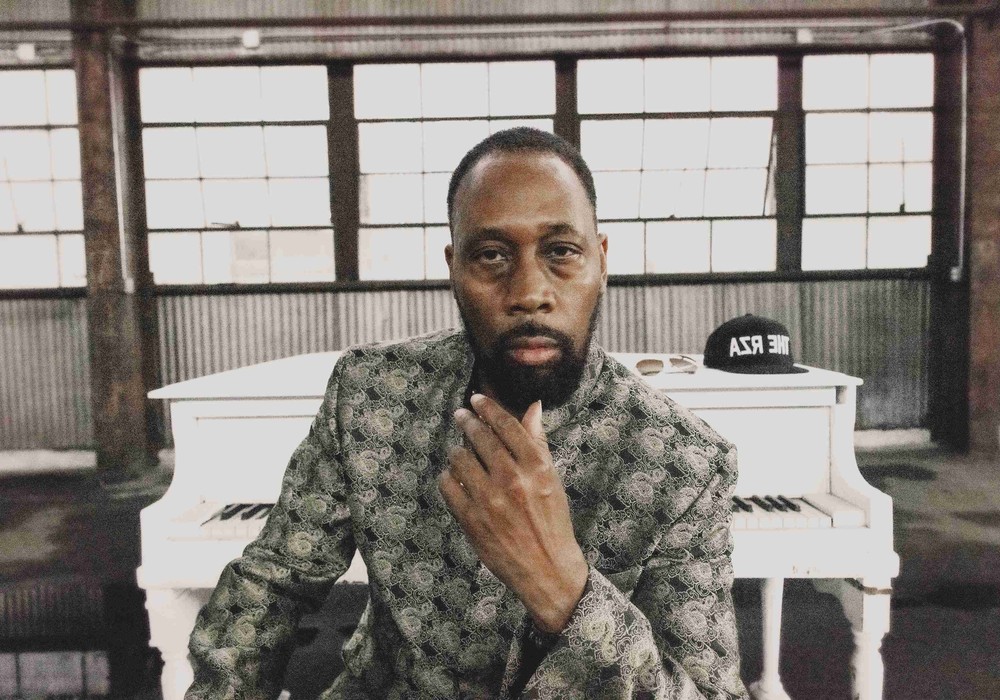As the guiding light of twang-raunch-rock stalwarts Southern Culture On The Skids, singer/ guitarist/producer Rick Miller has steered the band through over 30 years of musical adventures, spanning lo-fi DIY recordings, major label plot twists, the endless touring road, and, eventually, the emergence of Kudzu Ranch Recorders, a super-versatile, comfortable recording studio in rural North Carolina. In addition to his band SCOTS, artists like The Fleshtones, The Woggles, Dexter Romweber, and scores of others have made remarkably exciting-sounding records at Kudzu with Rick. There seems to be something about the rec-room informality of the studio that encourages fresh, live sounds and performances. Over the years, I’ve tracked a few projects at Kudzu Ranch (Two Dollar Pistols’ You Ruined Everything and Lud’s Defenestration Boulevard) and gotten to know Rick (plus drummer Dave Hartman and bassist-singer Mary Huff of SCOTS) pretty well. I’ve been lucky enough to have my band open for them a few times, and it is always a gas – an instant party, full dance floor, groovy, slinky guitar and bass lines, stand-up drumming with a snap reminiscent of NRBQ, fried chicken, banana pudding, and surprises such as… well, the latest I witnessed was an actual wedding onstage at The Sinclair in Cambridge, MA,. with Rick officiating the ceremony and the band providing music for the happy couple’s first dance! Rick later quipped, “You know, in both recording and marriage – we like to think that fidelity matters!”
Kudzu Ranch Recorders acts as the musical headquarters of Southern Culture On The Skids, but it is also a fantastic “clubhouse style” recording studio. Can you give a brief history of the place?
Well, we’ve always had a studio, going back to the beginning of the band in 1984. It grew. The Kudzu Ranch started out as a rehearsal place with a little Tascam Porta One; every place we’d move, it would move with us. I found this current place [a house with a detached building] in 1999. I bought it for the outbuilding; I put one wall in, closed up one of the bays, and turned it into a studio. I love the absorbent and reflective quality of raw cinderblock and concrete floors. [laughing] It really evolved out of a practice space, and has had more of a clubhouse flair than a [traditional] studio [vibe]. When we got signed to Geffen Records in 1994, I was living at an old abandoned gas station. I eventually moved from there to here, because I was looking for a bigger studio. This place has an old garage bay; it had been a car repair place and a guy built muscle cars here. There is actually a hydraulic lift in the other room!
That’s what I love about it.
Right! It evolved from an artist’s perspective and a rehearsal perspective. I always wanted to make a place with no clocks on the wall; a room where people can come in, get a good performance and a relaxed feel, and nothing is too precious about it.
Did you guys always do your own records from the get go?
No, one of the guys who helped me build this place is Mark Williams, who did our two albums for Geffen Records, as well as the Santo Swings! singles with us down at Reflection Studios in Charlotte, [North Carolina]. He helped me immensely when it came time to pick out some gear – it was all bought with royalties from songwriting for the band. I thought, “Well, what can I do with my royalties that would be smart?” [laughing] I don’t know how smart it was, but at the time it seemed like a good idea to build a studio. We’ve been a band since the cassette days, and we used to sell our cassettes that we made on our Tascam Porta One. When we signed to Geffen, they gave us a little bit of money; I took $1500 and I found a Tascam 8-track, 1/2-inch, a little Mackie 1604 board, a couple of Furman parametric EQs, a Shure [SM]57 and [SM]58, and I had a RadioShack PZM mic.
I remember those! Very handy.
Yeah! [laughing] We started demoing songs.
We actually demoed “Red Beans N’ Reverb” in the garage bay there. When we signed to Geffen, the A&R guy was like, “I love this song.” Before our first record, Dirt Track Date – which we did with Mark in Charlotte – came out, that song got on a soundtrack, and I made more money than I’d ever made before from playing music.
What was the film?
The movie was called Flirting with Disaster. It’s funny, man! Mary Tyler Moore is in it, and George Segal, Ben Stiller, Patricia Arquette, and Alan Alda. I thought, “Hey, this isn’t a bad racket. There is some money to be made from publishing and recording.” From then on I always had
the studio idea in the back of my mind. We spent a lot of time doing our own demos, but also working with Mark at Reflection in Charlotte, which was a great studio. They had a nice Neve board and a lot of old mics. He’s a great teacher; very open and free with his knowledge. He really helped me a lot in building this place. On our first record we did here, we didn’t have a board yet! But we bought our [MCI] JH-24 – the 24-track – from Mitch Easter [Tape Op #21]. We brought it over here, and we had a Mackie 24 x 8 [console]. We tracked everything through three Neve 1272 preamps; I had 6 channels. Liquored Up & Lacquered Down was the first record we made here. We tracked that straight to tape, and we used a Mackie board to monitor; we also had a few of these Neve preamps – that was it. We took it over to mix it at Mitch’s. That’s how I knew about Mitch’s room, because we didn’t have the facilities here yet.
Was this control room wall even here?
Yes, this wall was here, and I had built that room up there [a storage area above the control room], because that was all open space. That was actually gonna be a bunkhouse for bands if they wanted to stay here, but we ended up throwing guitars and gear in there and it’s full. I got worried about people, after they’d been drinking, walking downstairs to go to the bathroom. That probably wasn’t a good idea to stick bands up there!
Safety first.
Right! Then we got this Sony board in 2004. I found it really cheap. Mark used to have one at Reflection, and he told me what a good deal they were, and what great boards they were. I found one in Kansas City, [Missouri], at an old audio/visual place that had gone all digital.
It was between $6,000 to $8,000, which was a lot of money for me, but looking at what Neves or APIs were going for... Then I bought the [Ampex] ATR-102 [2-track deck]. The first record that we recorded and mixed here was Mojo Box. Basically the gear has been the same ever since. I started recording other bands around that same time as Mojo Box, once I felt comfortable with knowing what I was doing. It took me a while. I wasn’t a trained engineer; I never went to school for any of this.
That was around the time when I did that Two Dollar Pistols record.
That’s right! You were one of the first guys to come down here and use this studio as an outside engineer.
Was I?
I think so. Mark had used it for some recordings. I had done some projects with the Knockdown Society – Jimbo Mathus from Squirrel Nut Zippers. It was a slow process.
Your band is a full-time job.
We were very busy with the band at that time. We were touring 200-plus days a year.
If you were on the road the studio would sit still.
Yeah, luckily for me it wasn’t my sole source of income. All we did on the road was go to music stores, pawn shops, and thrift stores, so I found all the items that populate this place. It’s a great place to put it all, such as the velvet paintings of Wile E. Coyote, and things like that, plus all my old amps and guitars. I’m like a cat lady for amps. My wife was very happy [everything ended up in the studio].
I remember when we did the Two Dollar Pistols, you said, “These amps are all great – use ‘em all.” But it was an impenetrable fortress of amps.
I had ‘em all over here, and it’d take you a day to find a [Fender] Deluxe! I thought, “It’ll be great. When guys come in, they can have their pick.” Like, “I’ve never played through a Supro.” And with the whole re-amping thing – I always record a DI signal, and we can always re-amp it if we want to at mixdown.
I know you use plug-ins a little bit. Have you ever gone to the dark side and used amp modeling?
Very, very seldom. It’s usually when I have no time, like when there’s something wrong with the track and it’s not fitting in. You really can sculpt a sound on those things; it’s pretty amazing. I used [Line 6] Amp Farm, I think, because I had Pro Tools. Somebody turned me on to [IK Multimedia] AmpliTube, and I really like that one because it’s got a Silvertone [model]. My bitch was, “It’s got a [Fender] Twin Reverb, and it’s got a Marshall stack, but where’s the Harmony amp? Where’s the Supro? Where’s the Valco?” But I do use plug-ins more and more, like mixing in the box for remixes. But everything – once I get it together in the computer – it does run through the Manley compressor and through the board, with maybe some high-pass filtering into the ATR-102, and then it dumps back into the computer.
So you mix hybrid, sort of in the box. Your automation is in the box, but the sonics are out of the box.
It makes sense, and the remixes take half an hour.
That’s nice to be able to do that. Remember the old days?
Yeah. It would take me half a day. Even with notes, every day would be a little bit sonically different. But again, making the studio more of an enjoyable place for artists, one thing that I do that everybody seems to really love is I split my computer monitor out here into the studio, so they can see what’s being recorded. I’ll leave up the edit window in Pro Tools, and it really helps with communication. Not only that, but when I’m working with the band, I do it all right here in the live room.
It’s like an auxiliary control room?
That’s exactly what it is. It really has worked out. I remember trying to do overdubs with a tape deck while I was playing guitar – it was so silly. I took some duct tape and I taped a pencil to the end of my [guitar’s] headstock to hit the button with. [laughing] I’d give myself a lot of pre-roll, but it was still very difficult. That’s when I got this setup.
The records I’ve heard come out of here sound very natural, fun, and not labored.
Yeah. The nice thing about having a room like this, too, is drummers love it. They can play loud, and the drums sound good in here. I don’t ever do any treatment with them, other than a little bit of EQ, and maybe some compression. But as far as reverb, I never even touch it. It always sounds pretty good. One time somebody else did a project here and they put the drums in the little iso booth, trying to get a really dry sound. I didn’t think it sounded that great. I mean, you could’ve gotten a dry sound out here.
What was the process for your latest SCOTS album [The Electric Pinecones]?
We used to open for ourselves as The Pinecones when we couldn’t afford an opening band. We had a guy that played some lap steel with us, and the drummer would just play a snare. Mary played bass, and I strummed an acoustic guitar. We’d open up for ourselves, doing our folk country thing.
Were you in disguise?
We were! Then we’d come out with our over the top Southern Culture thing, so it was a little bit of both. We tried to move back into The Pinecones’ realm of things with this last record. There are acoustic guitars, and some tracks don’t have drums. It was fun. I think good music is always about having fun.
You guys do that!
Well, I couldn’t do it otherwise. And recording is the same way. The one thing I really don’t like about recording is when people get so uptight about it all. The idea behind this whole place is, “Relax. Let it flow out of you.”
And it works.< /p>
Enjoy. It does work.
